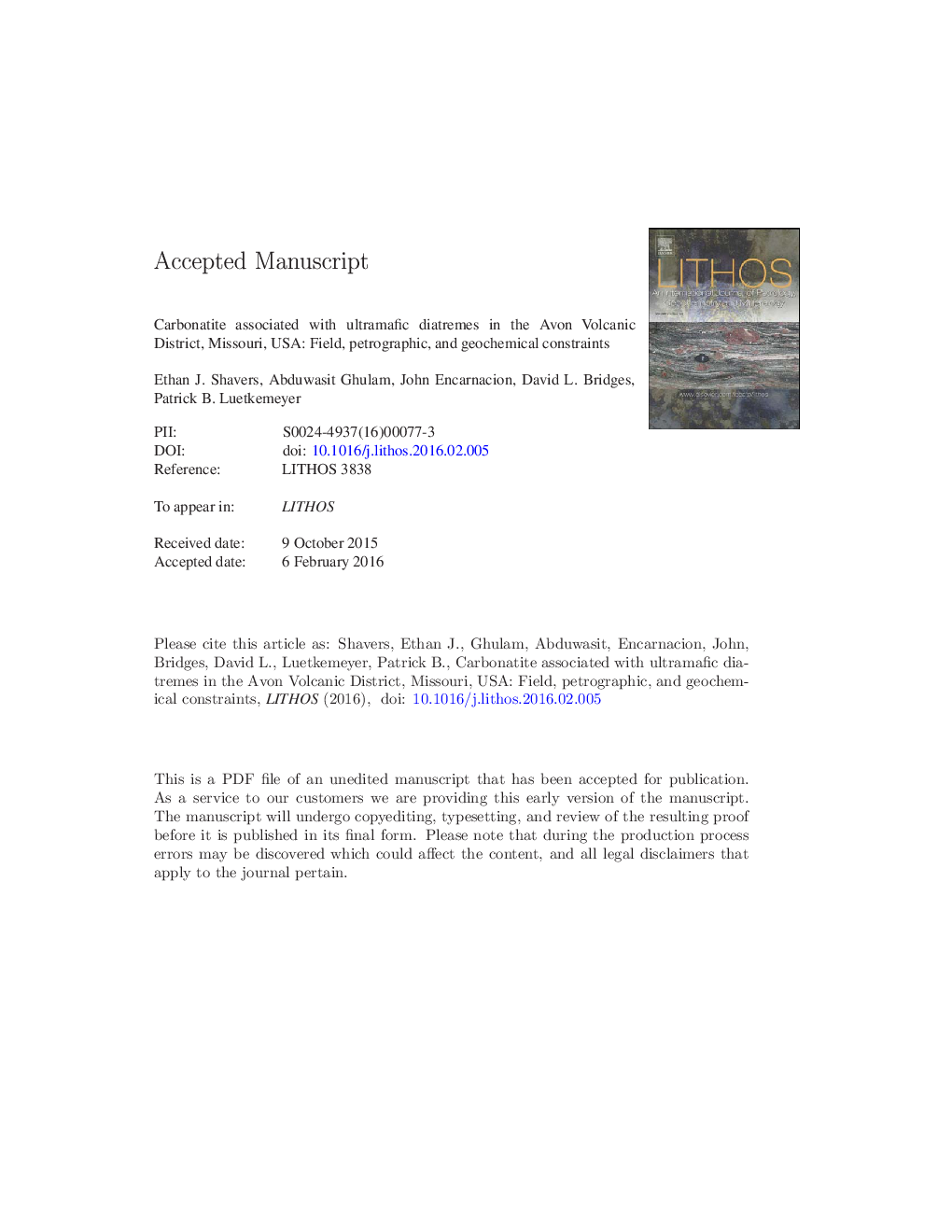| Article ID | Journal | Published Year | Pages | File Type |
|---|---|---|---|---|
| 6440424 | Lithos | 2016 | 50 Pages |
Abstract
Here we report field, petrographic, and geochemical analyses of the southeast Missouri Avon Volcanic District intrusive rocks and present the first combined textural and geochemical evidence for the presence of a primary magmatic carbonatite phase among ultramafic dikes, pipes, and diatremes of olivine melilitite, alnöite, and calciocarbonatite. The δ13CVPDB values measured for primary calciocarbonatite as well as carbonates in olivine melilitite and alnöite rocks range from â 3.8â° to â 8.2â°, which are within the typical range of mantle values and are distinct from values of the carbonate country rocks, 0.0â° to â 1.3â°. The carbonate oxygen isotope compositions for the intrusive lithologies are in the range of 21.5â° to 26.2â° (VSMOW), consistent with post-emplacement low temperature hydrothermal alteration or kinetic fractionation effects associated with decompression and devolatilization. Metasomatized country rock and breccia-contaminated igneous lithologies have carbonate δ13CVPDB values gradational between primary carbonatite values and country rock values. Unaltered sedimentary dolomite breccia and mafic spheroids entrained by calciocarbonatite and the lack of microstratigraphic crystal growth typical of carbonate replacement, also exclude the possibility of hydrothermal replacement as the cause of the magmatic-textured carbonates. Rare earth element (REE) patterns for the alnöite, olivine melilitite, and carbonatite are similar to each other with strong light REE enrichment and heavy REE depletion relative to MORB. These patterns are distinct from those of country rock rhyolite and sedimentary carbonate. These data suggest that rocks of the Avon Volcanic District represent a single ultramafic-carbonatite intrusive complex possibly derived from a single mantle source.
Related Topics
Physical Sciences and Engineering
Earth and Planetary Sciences
Geochemistry and Petrology
Authors
Ethan J. Shavers, Abduwasit Ghulam, John Encarnacion, David L. Bridges, P. Benjamin Luetkemeyer,
